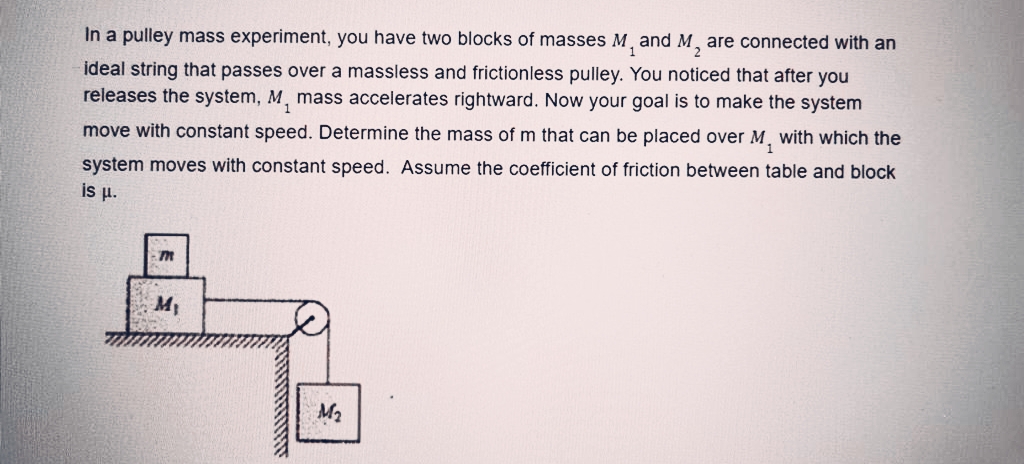In a pulley mass experiment, you have two blocks of masses M₁ and M₂ are connected with an ideal string that passes over a massless and frictionless pulley. You noticed that after you releases the system, M, mass accelerates rightward. Now your goal is to make the system move with constant speed. Determine the mass of m that can be placed over M, with which the system moves with constant speed. Assume the coefficient of friction between table and block is μ. m M₁ M₂
In a pulley mass experiment, you have two blocks of masses M₁ and M₂ are connected with an ideal string that passes over a massless and frictionless pulley. You noticed that after you releases the system, M, mass accelerates rightward. Now your goal is to make the system move with constant speed. Determine the mass of m that can be placed over M, with which the system moves with constant speed. Assume the coefficient of friction between table and block is μ. m M₁ M₂
Related questions
Question

Transcribed Image Text:In a pulley mass experiment, you have two blocks of masses M₁ and M₂ are connected with an
ideal string that passes over a massless and frictionless pulley. You noticed that after you
releases the system, M, mass accelerates rightward. Now your goal is to make the system
move with constant speed. Determine the mass of m that can be placed over M, with which the
system moves with constant speed. Assume the coefficient of friction between table and block
is μ.
M₁
47
M2
Expert Solution
This question has been solved!
Explore an expertly crafted, step-by-step solution for a thorough understanding of key concepts.
Step by step
Solved in 2 steps with 2 images
